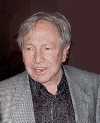 One of contemporary American art’s most prolific and influential figures, Rauschenberg was a painter whose three-dimensional collages, known as “combines,” incorporated objects—such as soda bottles and stuffed birds—and anticipated the emerging pop art movement, of which he became a pivotal figure. He later used silk-screening to transfer images from print media to canvas. What did Rauschenberg submit to a gallery exhibition for which artists were asked to create portraits of the gallery owner? Discuss
One of contemporary American art’s most prolific and influential figures, Rauschenberg was a painter whose three-dimensional collages, known as “combines,” incorporated objects—such as soda bottles and stuffed birds—and anticipated the emerging pop art movement, of which he became a pivotal figure. He later used silk-screening to transfer images from print media to canvas. What did Rauschenberg submit to a gallery exhibition for which artists were asked to create portraits of the gallery owner? Discuss
Source: The Free Dictionary
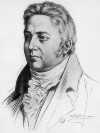 One of the most versatile and influential figures in the English Romantic movement, Coleridge was a poet and critic who perfected a sensuous lyricism in his poetry that was echoed by many later poets. His most famous works include “Rime of the Ancient Mariner” and “Kubla Khan.” Known for his influential lectures on Shakespeare, he later wrote Biographia Literaria, the most significant work of general literary criticism of the Romantic period. To what drug was Coleridge addicted?
One of the most versatile and influential figures in the English Romantic movement, Coleridge was a poet and critic who perfected a sensuous lyricism in his poetry that was echoed by many later poets. His most famous works include “Rime of the Ancient Mariner” and “Kubla Khan.” Known for his influential lectures on Shakespeare, he later wrote Biographia Literaria, the most significant work of general literary criticism of the Romantic period. To what drug was Coleridge addicted?  Though now known as the greatest architect of the English baroque style, Wren was first a celebrated astronomer and mathematician who was one of the founders of the Royal Society. His architectural career began in 1661 when King Charles II appointed him assistant to the royal architect. Wren went on to help rebuild more than 50 churches destroyed in the Great Fire of London in 1666. He also designed Saint Paul’s Cathedral, where he is buried. What famous epitaph appears on Wren’s burial marker?
Though now known as the greatest architect of the English baroque style, Wren was first a celebrated astronomer and mathematician who was one of the founders of the Royal Society. His architectural career began in 1661 when King Charles II appointed him assistant to the royal architect. Wren went on to help rebuild more than 50 churches destroyed in the Great Fire of London in 1666. He also designed Saint Paul’s Cathedral, where he is buried. What famous epitaph appears on Wren’s burial marker?  Nicknamed “Three Finger” by the press because a farming accident in his youth cost him parts of two fingers on his right hand, Brown was one of the top Major League Baseball pitchers at the turn of the 20th century. He used his injury to his advantage, developing a unique grip on the ball that produced an unusual amount of spin, baffling batters. Over the course of his major league career, Brown won 239 games and lost just 130. With what team did he win two World Series championships?
Nicknamed “Three Finger” by the press because a farming accident in his youth cost him parts of two fingers on his right hand, Brown was one of the top Major League Baseball pitchers at the turn of the 20th century. He used his injury to his advantage, developing a unique grip on the ball that produced an unusual amount of spin, baffling batters. Over the course of his major league career, Brown won 239 games and lost just 130. With what team did he win two World Series championships?  Oswald, a US Marine who defected to the Soviet Union only to return and settle in Dallas, Texas, with his Russian wife and daughter, is widely believed to have been the assassin of US President John F. Kennedy. On November 22, 1963, Oswald allegedly fired three shots from a window on the sixth floor of the Texas State School Book Depository, killing Kennedy. While in police custody, Oswald was murdered by nightclub owner Jack Ruby. Whom did Oswald allegedly try to assassinate earlier in 1963?
Oswald, a US Marine who defected to the Soviet Union only to return and settle in Dallas, Texas, with his Russian wife and daughter, is widely believed to have been the assassin of US President John F. Kennedy. On November 22, 1963, Oswald allegedly fired three shots from a window on the sixth floor of the Texas State School Book Depository, killing Kennedy. While in police custody, Oswald was murdered by nightclub owner Jack Ruby. Whom did Oswald allegedly try to assassinate earlier in 1963?  Margarita Cansino began her show business career as a child, dancing flamenco with her well-known father, Eduardo. After taking acting lessons, changing her last name to Hayworth, and dying her hair its trademark red, she began her acting career. Her appearance in a series of musicals made her a star, and her role in Gilda confirmed her status as a Hollywood sex symbol, making her one of the most popular wartime pinups. Hayworth’s picture is rumored to have been placed on what weapon?
Margarita Cansino began her show business career as a child, dancing flamenco with her well-known father, Eduardo. After taking acting lessons, changing her last name to Hayworth, and dying her hair its trademark red, she began her acting career. Her appearance in a series of musicals made her a star, and her role in Gilda confirmed her status as a Hollywood sex symbol, making her one of the most popular wartime pinups. Hayworth’s picture is rumored to have been placed on what weapon? 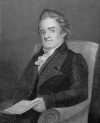 Webster was an American lexicographer. After serving in the American Revolution, he published The Elementary Spelling Book, or “Blue-Backed Speller,” which helped standardize American spelling and sold some 100 million copies. In 1807, he began work on his landmark American Dictionary of the English Language, which included definitions of 70,000 words—of which 12,000 had never appeared in a dictionary before. How many languages did he learn while compiling the dictionary?
Webster was an American lexicographer. After serving in the American Revolution, he published The Elementary Spelling Book, or “Blue-Backed Speller,” which helped standardize American spelling and sold some 100 million copies. In 1807, he began work on his landmark American Dictionary of the English Language, which included definitions of 70,000 words—of which 12,000 had never appeared in a dictionary before. How many languages did he learn while compiling the dictionary? 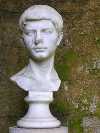 Virgil was a Roman poet and the author of the Eclogues, the Georgics, and the Aeneid, widely regarded as one of the greatest long poems in world literature. The Aeneid, Rome’s national epic, tells the legendary story of the Trojan hero Aeneas, whose descendants become the founders of Rome. What later poet portrayed Virgil as the guide to Hell in his great literary classic The Divine Comedy?
Virgil was a Roman poet and the author of the Eclogues, the Georgics, and the Aeneid, widely regarded as one of the greatest long poems in world literature. The Aeneid, Rome’s national epic, tells the legendary story of the Trojan hero Aeneas, whose descendants become the founders of Rome. What later poet portrayed Virgil as the guide to Hell in his great literary classic The Divine Comedy? 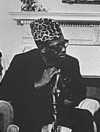 Mobutu was the president of Zaïre—now the Democratic Republic of the Congo—from 1965 to 1997. His repressive regime resulted in corruption and poverty, while he amassed one of the largest personal fortunes in the world. He was overthrown in 1997 and died in exile in Morocco. As part of his policies, he required Africanization of all European names, changing the Congo’s name to Zaïre and his own name, Joseph Désiré Mobutu, to Mobutu Sese Seko Kuku Ngbendu Wa Za Banga, which means what?
Mobutu was the president of Zaïre—now the Democratic Republic of the Congo—from 1965 to 1997. His repressive regime resulted in corruption and poverty, while he amassed one of the largest personal fortunes in the world. He was overthrown in 1997 and died in exile in Morocco. As part of his policies, he required Africanization of all European names, changing the Congo’s name to Zaïre and his own name, Joseph Désiré Mobutu, to Mobutu Sese Seko Kuku Ngbendu Wa Za Banga, which means what? 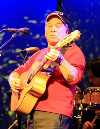 Simon is an American singer and songwriter who first gained fame as half of the duo Simon and Garfunkel. Simon first met Art Garfunkel in sixth grade at their public school in Queens, New York. The two began performing together in the 1950s, using the name Tom and Jerry. After a break, they reunited in 1964 as Simon and Garfunkel but split again in 1970, not long after their highly successful album Bridge over Troubled Water was released. What albums did Simon record as a solo artist?
Simon is an American singer and songwriter who first gained fame as half of the duo Simon and Garfunkel. Simon first met Art Garfunkel in sixth grade at their public school in Queens, New York. The two began performing together in the 1950s, using the name Tom and Jerry. After a break, they reunited in 1964 as Simon and Garfunkel but split again in 1970, not long after their highly successful album Bridge over Troubled Water was released. What albums did Simon record as a solo artist?